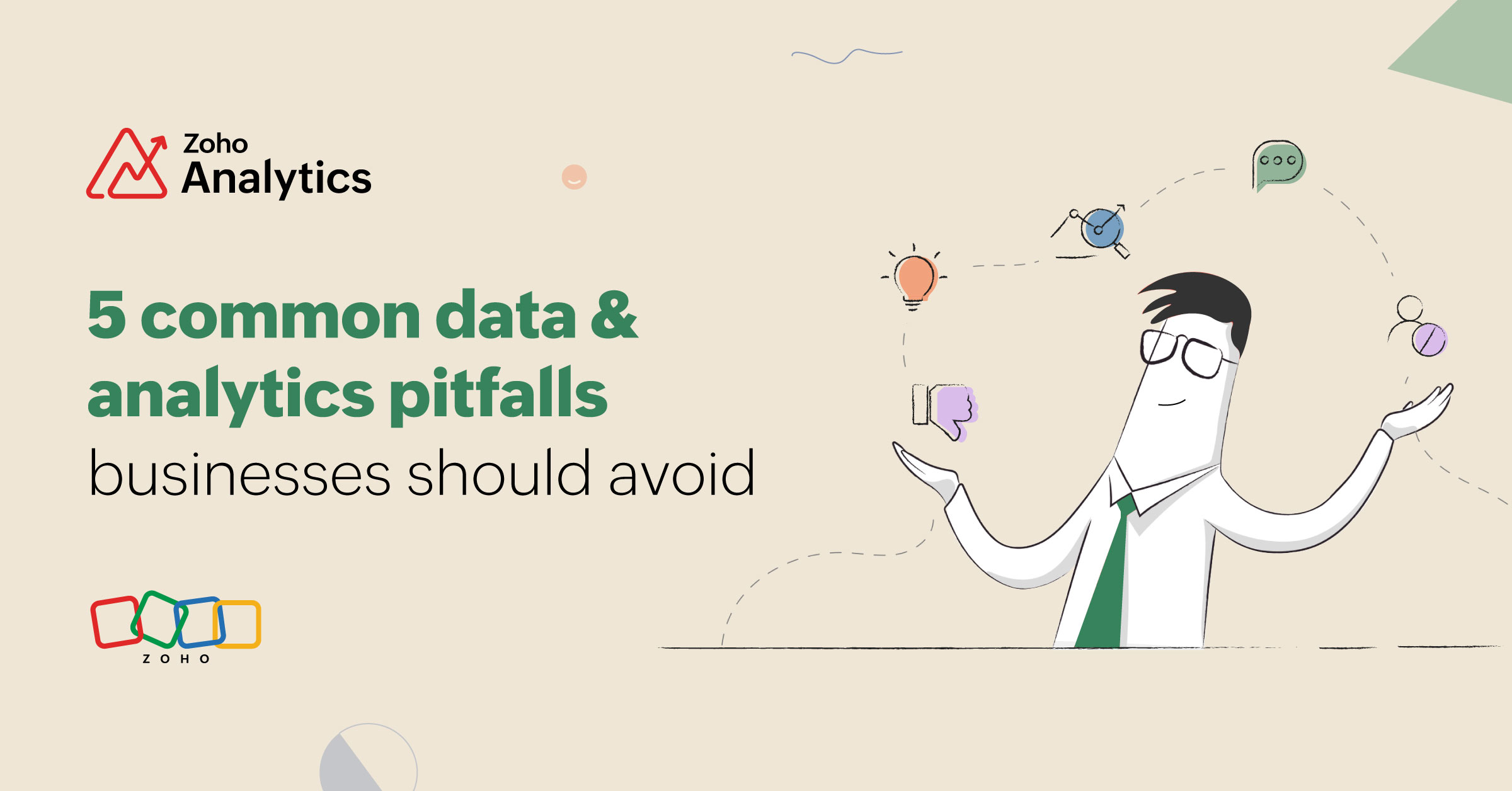
In today's data-driven world, organizations are harnessing the power of data analytics like never before. Yet, a recent study reveals that 87% of businesses feel their data is their most under-utilized asset. While there are many powerful analytics capabilities making it to the market, it's crucial to empower business users with the skills to fully harness data.
In this blog, we'll discuss five common data and analytics pitfalls that businesses should avoid to unlock the full potential of their data. Drawing from years of industry experience and customer interactions, we've identified the following pitfalls:
Poor data quality
Unilateral analytics
Superficial analytics
Reactive response
Limited access to insights
Let's explore each of these in detail.
Poor data quality
Data quality is paramount in analysis, because inaccurate data can lead to misleading insights that harm businesses. Data preparation is a critical step in analytics, involving cleaning, enriching, modelling, transforming, and cataloging data for analysis. However, users often find this stage tiresome and time-consuming, due to the lack of technical know-how and process complexities.
To address these challenges and enhance data quality, modern business intelligence (BI) platforms now offer automated and augmented data preparation capabilities as a part of their tech stacks. These advancements streamline and improve the data preparation process and experience.
Check out the demo video below of an AI-powered data preparation feature called Cluster and Merge. This capability is invaluable for grouping and cleaning data, particularly in large datasets.
Unilateral analytics
Unilateral analytics, a common analysis pitfall, occurs when only one aspect of data is considered, neglecting the rest. This approach yields incomplete or biased insights, undermining the purpose of analysis. To achieve comprehensive and unbiased results, it is crucial to take a holistic approach.
To overcome this, it's essential to clearly define the analysis intent in advance. This helps ensure the inclusion of all relevant data, and enables the generation of comprehensive insights that accurately reflect reality. However, data is often stored across various sources or silos, making it difficult to ingest and model data.
With today's robust data-blending capabilities, this issue can be addressed. Take a look at the dashboard below, where data from four different sources are integrated, and smartly modeled for a 360° view of the business.
Superficial analytics
Superficial analytics refers to scratching the surface of data insights without delving into the underlying information. In today's data landscape, valuable insights are buried in the depths, and overlooking them leads to relying on basic metrics and summaries. This approach can result in missed opportunities and an inability to identify the causes of problems.
With advanced exploratory analytics and predictive modeling, users can uncover hidden insights and unlock the full potential of data. Here's a demo video where we forecast the monthly sales trend for a business. Utilizing these forecasted values, the business can set sales targets, proactively plan their resources, and much more.
Reactive response
A reactive response can hinder anticipating potential problems in a business, which makes it vital for BI users to closely monitor data insights instead of merely reacting to issues. However, a common mistake at this stage is neglecting to monitor crucial changes in data, leading to delays in acting on critical business changes.
This challenge can be overcome by enabling data analytics software platforms to deliver insights to users proactively, without having them log in to a BI platform. In the demo video below, we showcase data alerts, a powerful AI capability to closely monitor business metrics. Using data alerts, users can be immediately notified about key changes in their KPIs across any channel of their choice.
Limited access to insights
Data insights can help businesses make powerful transformative decisions. However, business users can often face the challenge of having limited access to insights due to minimal technology know-how. To address this, modern BI platforms aim to empower all users, regardless of technical proficiency, with simplified access to insights. This includes integrating AI-powered intelligent assistants directly into BI workflows, enabling users to interact with data and perform analysis using natural language.
Explore the demo video below, showcasing the use of Ask Zia, an AI-powered conversational analytics capability to humanize data interactions.
Conclusion
In conclusion, businesses must be aware of and avoid common pitfalls in data and analytics to maximize the value and effectiveness of their data strategies. By steering clear of these pitfalls, organizations can ensure that they make informed decisions, drive innovation, and stay ahead in today's data-driven landscape. This can be done by leveraging a powerful Business Intelligence(BI) tool like Zoho Analytics.
Watch our complete webinar on the five data and analytics pitfalls businesses should avoid.
You can also sign up for Zoho Analytics today, or schedule a free personalized demo with one of our experts.
Comments